Recently I was talking with my 7 year-old daughter about the Asian hornets that have recently been spotted in the United States. Aside from looking terrifying and hurting humans, they are also known to kill bees.
My daughter wanted to know why it was important to keep bees alive, which brought us to the topic of super pollinators and how we can encourage them to visit our yard and garden by planting the right kinds of plants, we then turned our research into one of my favorite spring science experiments ever!
Keep reading to learn more about creating a super pollinator activity for kids and how to do our 3D life cycle of a bee activity for kids.
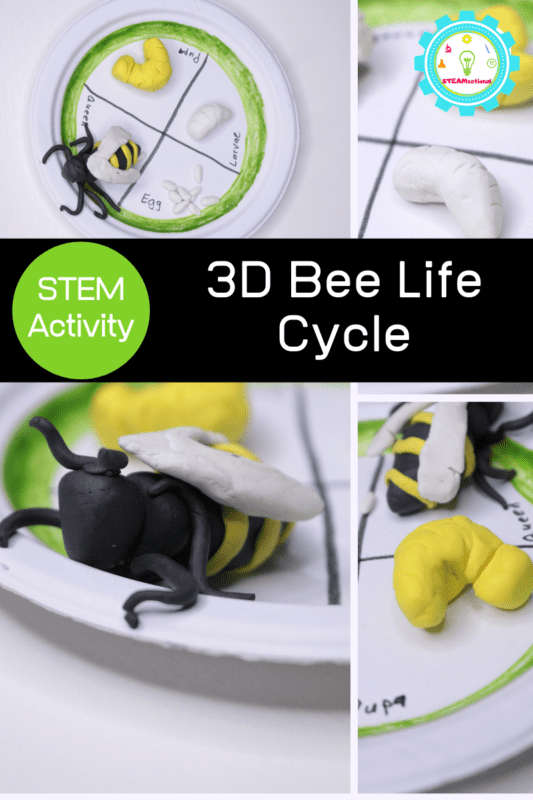
Super Pollinator STEM Activity for Kids
Although our activity started with bees and a bee life cycle, we ended up completing an entire STEM pollinator activity with elements of science, technology, and engineering.
What is a Super Pollinator for Kids
If you’re not familiar with the term, a super pollinator is an insect that can pollinate a wide range of plant types across a wide range of terrain and climates.
Some super pollinators that you might be familar with are bees, butterflies (especially Monarch butterflies, who travel across the United States each year), bats, and hummingbirds.
Since there are so many types of bees and they are attrated to many different plants, the honeybee is one of the largest pollinator species in the world.
How to Plant a Super Pollinator Garden Science Activity
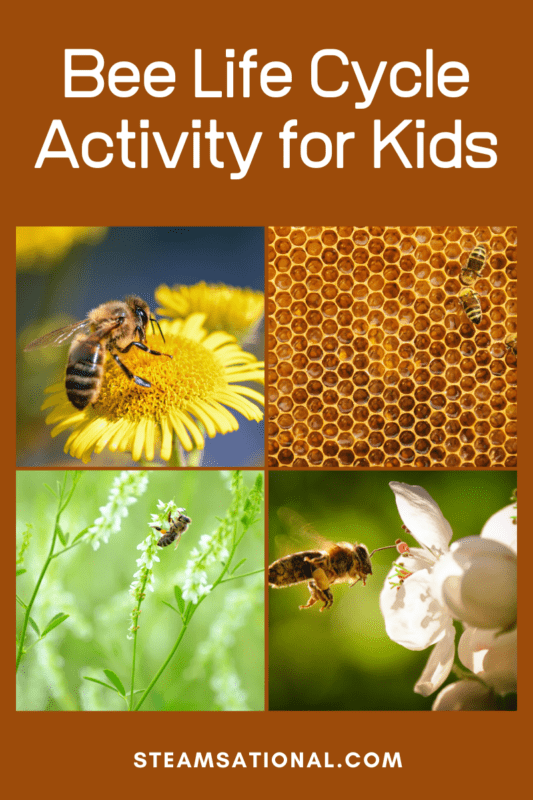
After learning about super pollinators, my daughter wanted to know what we could do to encourage bees and other super pollinators to visit our yard.
We live in Texas, which means that we have many types of bees and we get Monarch butterflies in the spring and fall as they travel from the United States to Mexico and back again.
In fact, the state butterfly of Texas is the Monarch!
Both bees and Monarch butterflies have declining populations (Monarch populations have declined by 80% since 2000) due to factors like lack of available habitats and over-use of chemicals in some areas.
But, we decided that we could turn our yard into a friendly habitat for bees and butterflies by planting flowers and plants that bees and butterflies love.
In our region, Monarch butterflies and bees like these plants:
- Green milkweed
- Mimosa trees
- Coneflowers
- Flame acanthus
- Meadow sage
- Mist flower
- Mountain laurel
We are adding more of these plants to our yard, to attract bees and butterflies.
To create your own super pollinator garden, look at a list of plants (preferably native) that attract bees and super pollinators in your region.
Then plant your flowers and track the bees that visit your garden!
How to Track Super Pollinator Activity
One of the most interesting parts about creating a super pollinator garden as a science activity is tracking the visitors that come to your garden.
We are using the app HabiTally to track the Monarch butterflies and other pollinators that visit our science garden.
Using the HabiTally app, users can enter info about what types of plants are in their habitat, if they have spotted Monarchs or other pollinators in their garden, and view data on other habitats and pollinator patterns in the United States.
We will be using this app throughout the next few months to track our garden activity.
3D Paper Plate Bee Life Cycle Activity
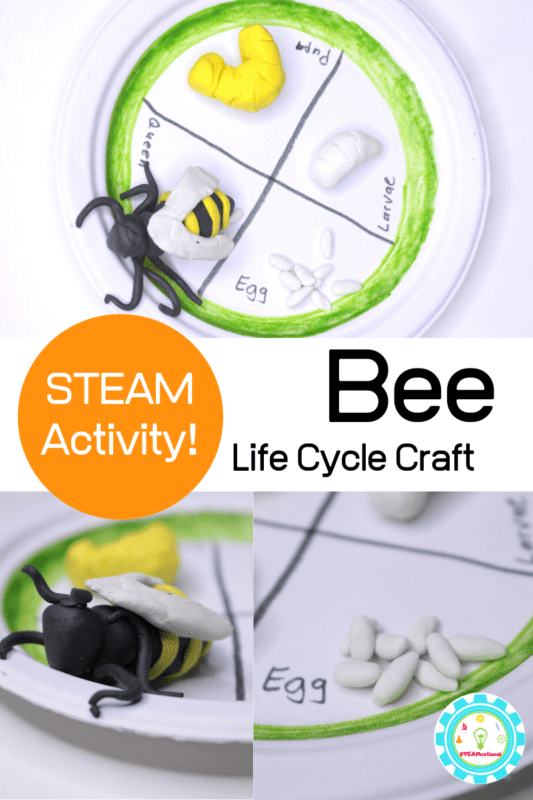
Follow these directions to make your own 3D bee life cycle model.
What are the four stages of the life cycle of a bee?
After we had talked about pollinators, my daughter wanted to know more about bees. She liked that bees are a female-driven species, so she wanted to learn more about bees.
We looked up the life cycle of bees and the different stages of life they go through.
Bees have four main life stages:
- Egg
- Larvae
- Pupa
- Adult
Follow along with these directions to make your own 3D bee life cycle model.
Supplies for a bee life cycle model:
- Paper plate
- Markers
- Clay (you can use play dough, polymer clay, or non-drying clay)
How to make a 3D bee life cycle model:
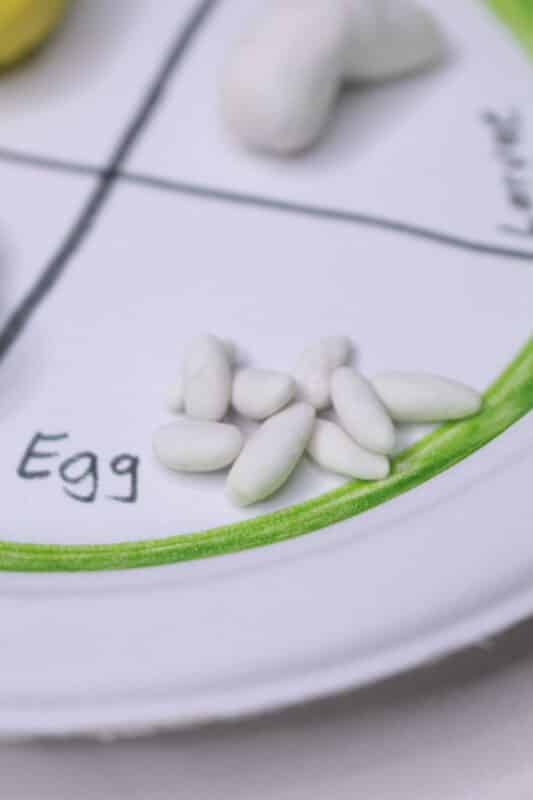
You will need white, yellow, and black clay for this activity.
First, divide your paper plate into quarters. Write the name of a life stage on each quarter of the plate.
Make the eggs by forming small rice-like pieces from white clay.
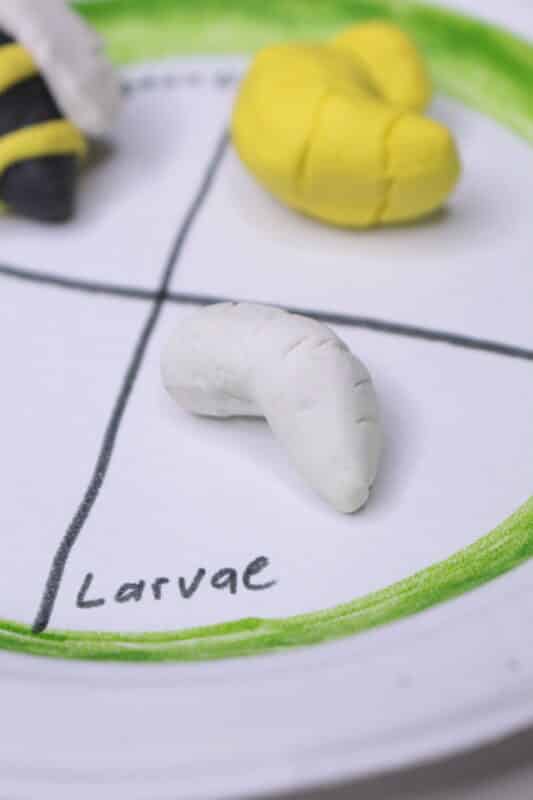
Next, make the larvae, which is just like a large, white grub.
We chose to make our pupa yellow, but you could also make it white. A pupa is a hard shell around the larvae that transforms the larvae into the bee’s adult form.
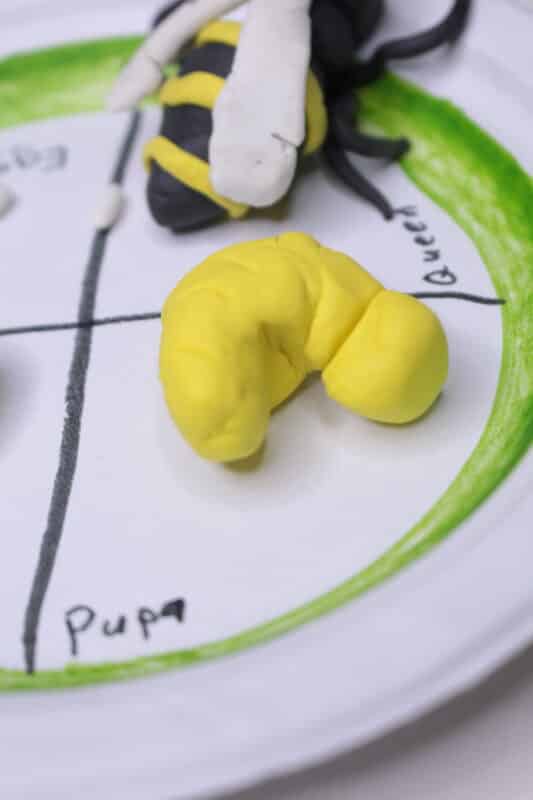
The adult bee has three main parts, a head, a thorax, and an abdomem. It also has six legs, two antennae, and two compact eyes.
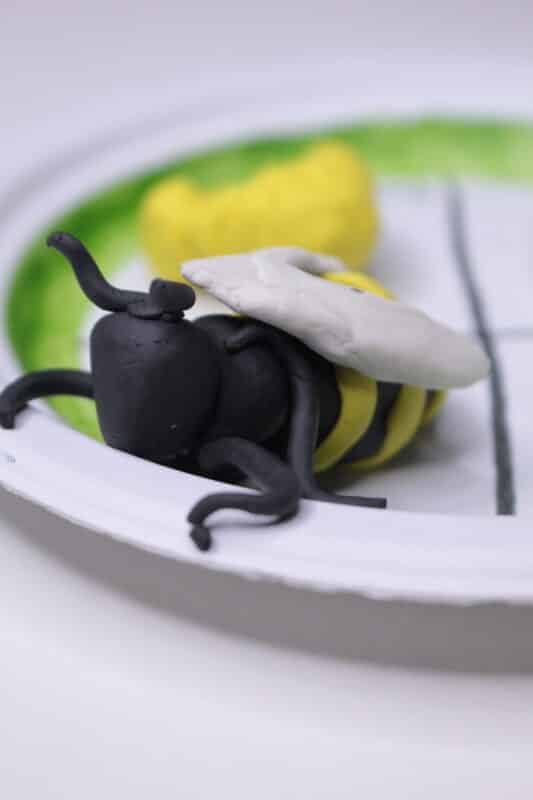
Female bees also have wings, but male bees (called drones), often do not.
It is rare to see a male bee outside of the hive.
What are your favorite bee life cycle activities?
More Insect Activities for Kids
Creative Insect STEM Activities for Kids
3D Butterfly Life Cycle Science Project

